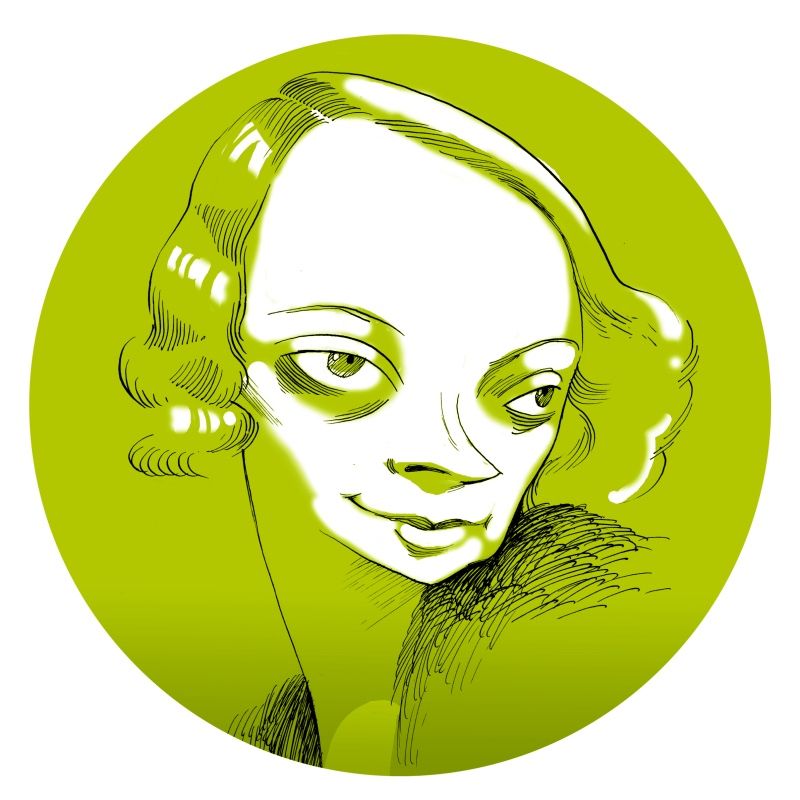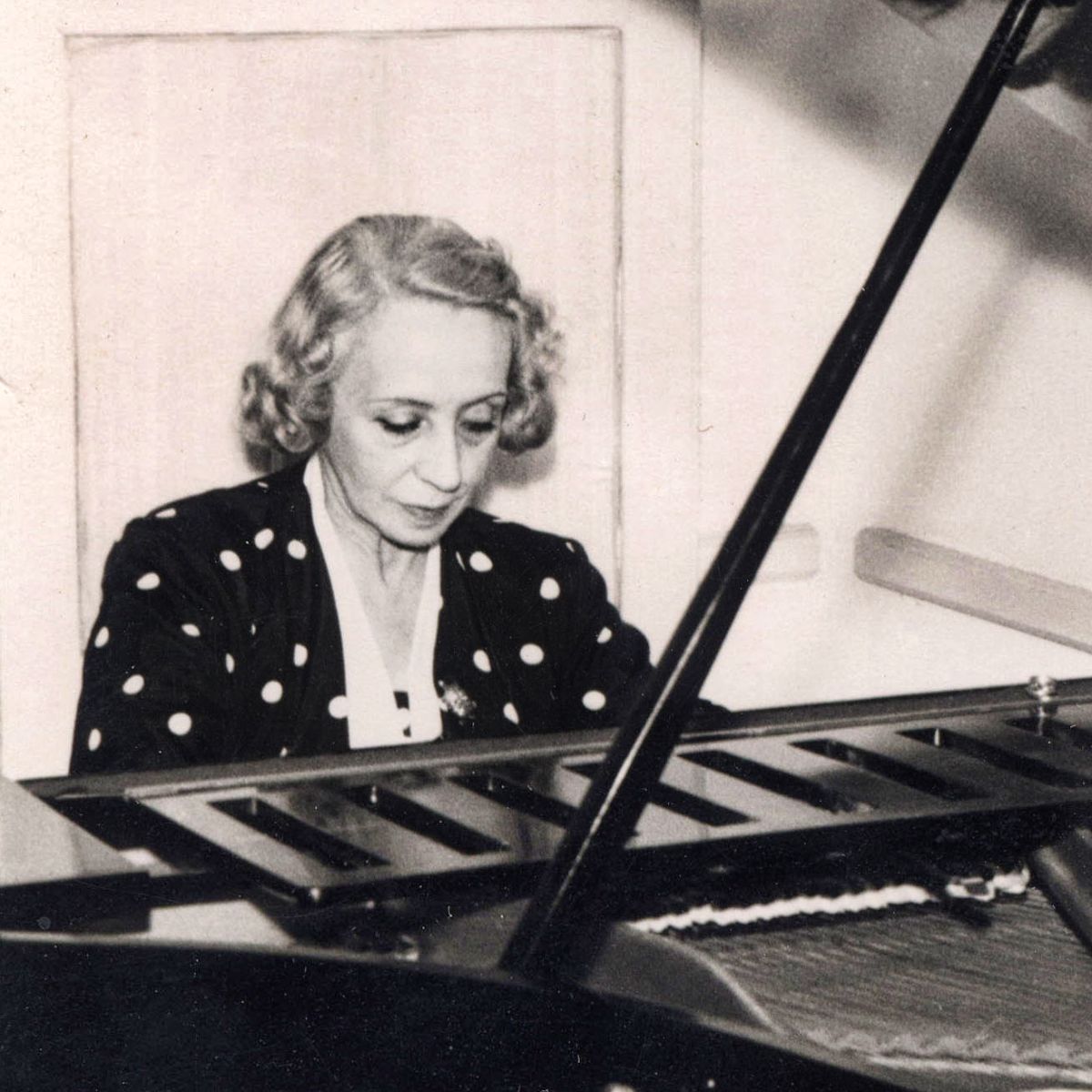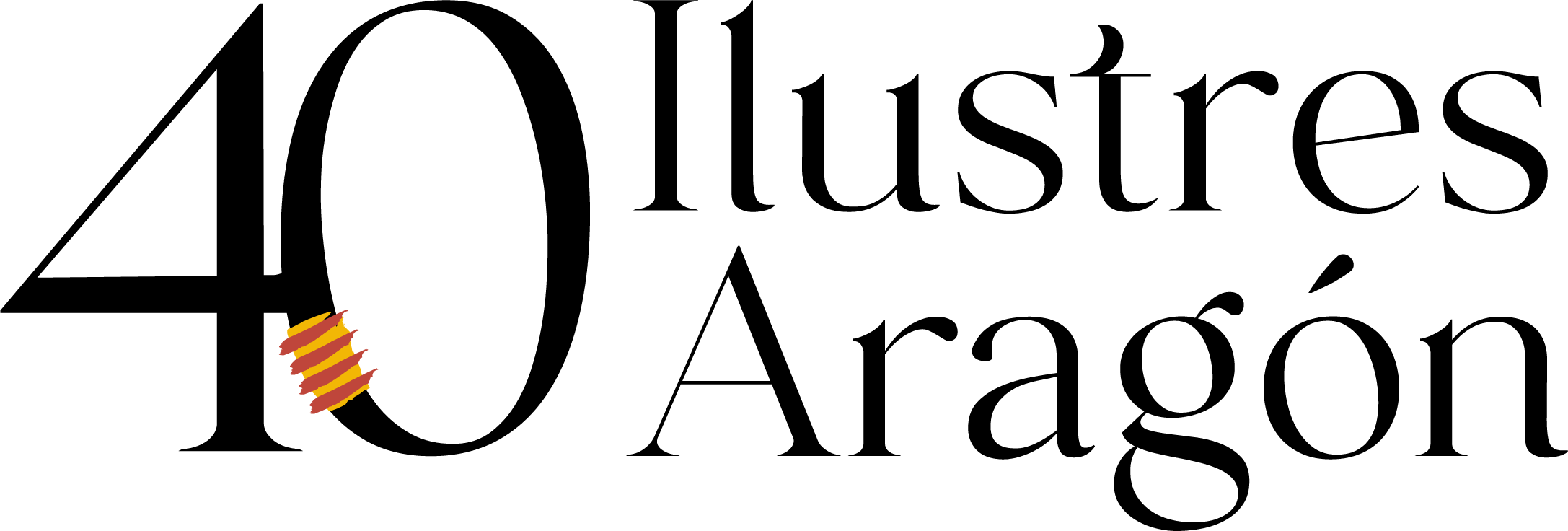Pilar Bayona
Delicate and sensitive, intense and vital
Saragossa, 1897-1979
Born into a well-to-do family, Pilar’s father, Julio Bayona, was a mathematics teacher. Her mother, Sara López de Ansó, was from Cariñena with an ancestral home in Cosuenda. From an early age she showed a special talent for music and received piano lessons from the Sirvent brothers. At the age of six she took part in a charity festival sponsored by King Alfonso XIII and at the age of ten she performed at the Teatro Principal with the Sociedad Filarmónica de Zaragoza.
In 1912 Pilar Bayona began a career as a concert pianist, both in recital and with orchestra, which would make her name known in Aragon and Spain. She coincided with prestigious composers and conductors of the stature of Tomás Bretón, José María Usandizaga, Joaquín Turina and Óscar Esplá, and performers such as the pianist Arthur Rubinstein and the violinist Juan Manén. He attracted interviews and magazine covers at the time, which brought him a certain amount of popularity. In those youthful years she met Luis Buñuel’s family (the future filmmaker was a pupil of Pilar’s father and was deeply in love with him without her apparently ever finding out).

Life
In the 1920s she became friends with two other Aragonese pianists somewhat younger than herself, who would also go on to achieve great things: Eduardo del Pueyo and Luis Galve (1908-1995). During those years she travelled to Germany: in Stuttgart and Berlin she played very representative programmes of contemporary Spanish music. Open to different styles, she was one of the first interpreters in Spain of musical impressionism. In her concerts she plays pieces by established composers such as Albéniz, Granados and Falla, but also by younger composers (Usandizaga, Rodrigo, the Halffter brothers, Mompou and Esplá, among others), and she is interested in works by foreign composers, from the Romantic Tchaikovsky and Brahms to more modern ones such as Debussy and Ravel (whom she will treat during visits by the composer to Madrid and Saragossa).
In addition to maintaining an intense concert activity, premiering works by composers such as López Chávarri and Turina or sharing the stage with Fleta, the pianist had a very close relationship with Aragonese intellectuals and artists who in the thirties developed a work very close to the avant-garde, through the Saragossan magazines Cierzo and Noreste and other interesting projects: The writer Tomás Seral y Casas (later a publisher and gallery owner), the surrealist painter Javier Ciria, the sculptor Honorio García Condoy, etc., were among Pilar Bayona’s circle of friends, and she was also very close to people linked to the Generation of 1927 and the Residencia de Estudiantes, maintaining a very close relationship with Federico García Lorca in the spring of 1936, a few weeks before the outbreak of the Civil War.
Work
Pilar spent the war in Saragossa and witnessed the end of the world of creativity and freedom she had known. In 1938 she began an active collaboration with Radio Zaragoza that would last for decades (practically until her death) and which allowed her art to reach the ears of many people. He found refuge in melody, and knew how to neutralise bitterness and sadness, hunger and repression, through beauty. Universal and at the same time very Aragonese and very much from Saragossa, in the post-war years she took part in concerts in Spanish cities and played for auditoriums in France, Portugal and Morocco, but her comfort zone was Aragon. She began a long and sustained collaboration with the International Summer Courses of the University in Jaca and spent as much time as she could in her city, Saragossa.

Saragossa
He was an accomplice of alternative currents to the official culture (tolerated but far removed from any enthusiasm for the Franco regime), and here he was in contact with intellectual friends such as the aforementioned Seral y Casas, the philosopher, theorist and art critic José Camón Aznar, the artist and musicologist Luis García-Abrines, the writers Manuel Derqui and Juan Eduardo Cirlot and Alfonso Buñuel (the architect and author of surreal collages, Luis’s younger brother). Also the art historians Federico Torralba and Julián Gállego, the architect Juan Pérez Páramo, the music critic Eduardo Fauquié, the engineer José María García Gil and his wife, the dancer and choreographer María de Ávila… all connected with her in that Saragossa that wanted to wake up.
During her mature years, her lucid mind, her small body and her privileged and agile hands supported a tireless activity, with hundreds of concerts in the fifties, sixties and seventies. For example, in Saragossa in 1951, he gave seven different concerts. Composers of the stature of Rodrigo, Bacarisse, Palau, Esplá, Mompou, Guridi, Remacha, Martínez Chumillas, Asencio, Matilde Salvador, among others, asked her to perform their new works. Praised by the critics, her activity as a performer of contemporary music is recognised, she is involved in the activities of the musical society Sansueña, she teaches at the Pablo Sarasate conservatory in Pamplona, she recorded records in Paris and Madrid, she is a Favourite Daughter of Saragossa (which dedicated a street to her during her lifetime), a member of the Academy of Fine Arts of San Luis…
A generous person, she never spared her presence in cycles, concerts, conferences and didactic activities. Pilar Bayona was a much-loved public figure. A few days after a performance in the Caja Inmaculada hall, she died in December 1979, aged 82, run over by a car in the streets of the city she always loved and which, after so many years, still misses her.
References
- Federico Sopeña (1982): Pilar Bayona, Zaragoza: Institución Fernando el Católico.
- Antón Castro (1999): “Pilar Bayona, la melodía del siglo”. Rolde. Revista de Cultura Aragonesa, 87.
- AA. (2010): Pilar Bayona. 30 miradas. Zaragoza: Libros del Innombrable.
- Pilar Bayona. Una música del siglo XX. Exposición. Catálogo de exposición (IAACC Pablo Serrano), 2021.
- Antonio Bayona (2021): “Pilar Bayona en la ficción”. Rolde. Revista de Cultura Aragonesa, 176-177.
- Gran Enciclopedia Aragonesa on line: http://www.enciclopedia-aragonesa.com/voz.asp?voz_id=2051
- Spanish Biographical Dictionary, Real Academia de Historia: https://dbe.rah.es/biografias/pilar-bayona-lopez-de-anso
- Wikipedia: https://es.wikipedia.org/wiki/Pilar_Bayona_L%C3%B3pez_de_Ans%C3%B3
- Pilar Bayona website: http://www.pilarbayona.es/ It contains the Archive, in which the family kept their legacy until it was donated to the Government of Aragon. It also offers biography, discography, photo album and audios.
Teaching activities
Pianist for authors of musical impressionism
Since she began to emerge, Pilar Bayona has been interested in incorporating contemporary composers into her repertoire, performing works by Falla, Albéniz, Granados, Ravel and Debussy. Match each of these composers with the work in the second column.
- Claude Debussy Goyescas
- Maurice Ravel Claro de luna
- Manuel de Falla La Danza del Fuego
- Isaac Albéniz Bolero
- Enrique Granados Suite Iberia
Solutions: 1-b; 2-d; 3-c; 4-e; 5-a
There are not many records of Pilar Bayona’s performances, but her website offers a fairly significant sample of some of her recordings. Specifically, works by Óscar Esplá (two pieces from Impresiones musicales), Albéniz (from Iberia), Debussy (from Douze Études), Ravel (from Miroirs) and Falla (Fantasía bética).
Listen to these works, what do they transmit to you in general? can you define it? do they give an idea of movement or rather of stillness? do you notice something like a certain “free” air, like flowing, like the notes follow one another with agility, with changes?
All these composers are considered to be notable representatives of a movement: musical impressionism. One of them, Debussy, said: “There is no theory. You just have to listen. Pleasure is the law. I like music with passion. And because I like it, I try to free it from the sterile traditions that stifle it. It is a free art that springs forth: an art in the open air, without limits, like the elements, the wind, the sky, the sea. In no case should it be closed and turned into an academic art”.
Experimenting (not to be confused with “improvising”), not being subject to academia… was very much in keeping with the character of Pilar Bayona, whose development as a pianist was very much intuitive and self-taught, studying on her own, and aware that the best school was hard work on stage. It is not surprising that so many composers of her time wanted her for the premieres of works that aspired to be innovative: they knew that she would get the best out of their scores.
Begoña Gimeno says: “What defines Pilar Bayona as a pianist is not only her virtuosity but also her musical understanding – the product of exhaustive analysis and search for expression – which was based on her special intuition to unravel the composer’s intention, her sonority, her good taste and sobriety in interpretation, her sensitivity, and her courage and willingness to approach and make known the music of her contemporaries”.
In his interpretations, Bayona manages to bring out his personality while respecting the fidelity of the work: with the impressionist composers, he knows how to create a sound ambience, an atmosphere and an indefinable colour.
The Saragossa of the little girl Pilar
Let us get to know better the city that formed part of Pilar Bayona’s childhood universe. She was ten and a half years old in May 1908, when the Spanish-French Exhibition opened in Saragossa. She had already performed in front of the public, and at important events, despite her young age.
The event commemorated the centenary of the Sieges, which immortalised the memory of the city in the midst of the Napoleonic invasion. The celebration of peace and good neighbourly relations formed part of the discourse of the Exposition, which also served as a showcase for a bourgeoisie that felt itself to be the protagonist and called upon to capitalise on the economic and social activity of the city and Aragon. This class identified itself with the destiny of a city with more than 100,000 inhabitants, which already had a brand new Mercantile Centre, which had recently inaugurated a beautiful building for the Faculty of Medicine and Science, which had new newspapers and industries, cultural and political projects of a regenerationist and regionalist nature, and so on. For a short time, social conflicts were to be slightly overshadowed.
In what place, on what space were the buildings of the Exposition installed? Can you identify it today? What attractions were there that caught your attention? What inventions and advances, what kind of products were on display? What mark did the Exposition leave on the urban planning of Saragossa? Do any buildings survive?
We like to imagine the Pilar Bayona of ten or eleven years old, a responsible and dedicated child, enjoying the attractions of this Exposition and forgetting for a short time the discipline in front of the keyboard.
Muse and woman of culture
Pilar Bayona was a dynamic woman, dedicated and loyal to her friends. Her image and personality attracted artists who immortalised her in some of their works. Javier Ciria portrayed her in oils, she was also painted by Pilar Aranda; she was drawn by Juan Lafita and Guillermo Pérez Baylo. Honorio García Condoy made a bust of her. Among her literary friends, Tomás Seral y Casas dedicated a composition to her in his book Poemas del amor violento (1933), and Juan Eduardo Cirlot published the book Pájaros Tristes y otros poemas a Pilar Bayona in 1942, inspired by her interpretation of Ravel’s work.
The article by Antonio Bayona in the journal Rolde (2021) cited among the references also contains other links between the pianist and literary fiction.
In relation to the cultural environment in which Pilar Bayona moved and to these incursions into fiction, we highlight one example.
In 2021, the professor and writer Jorge Sanz Barajas published the novel Volar alto (published by Xordica). With elements of fiction, it narrates real events around the marriage (also real) formed by the painter Ciriaco Párraga and Julia Tello, losers of the Civil War who live in semi-clandestinity in Saragossa in the early post-war years. The author involves the protagonists, albeit in a secondary way to the central plot, in an artistic and intellectual environment that is an alternative to that of the dictatorship. The author explains it as follows:
“The post-war period in Saragossa is a period full of chiaroscuro: among the cultural rubble of National Catholicism, Seral y Casas, Torralba, Alfonso Buñuel, Camón Aznar, Luis García Abrines, José Alcrudo or Pilar Bayona tried to keep alive the most valuable shoots of the past until the exhibitions of Santiago Lagunas, Antonio Saura or Baqué Ximénez and the Grupo Pórtico arrived”.
Apart from Pilar Bayona, several of these names have already been mentioned in the biography. Others have not. In any case, look them up on the internet and identify each of them with one or more terms that indicate their profession or some detail of their biography that seems relevant to you. Also look up information about the Portico Group – what do you think he means by ‘the most valuable shoots of the past’?
Volar alto is a short, entertaining novel, with a very easy-to-follow plot, very well portrayed characters who endear themselves to the reader, recognisable atmospheres? We recommend its reading.
Another aragonese pianists
The Aragonese musical scene of the 20th century produced other very interesting names. Among the piano players, we have mentioned the good relationship that Pilar Bayona maintained with Luis Galve (1908-1995) and with Eduardo del Pueyo (1905-1986).
Get to know them better by listening to these performances:
One last note: screening of Pilar Bayona
Since 1998, this pianist has given her name to one of the main concert programmes in Europe. In its twenty-five editions held until 2022, the Pilar Bayona Great Soloists Series has brought together dozens of the world’s leading pianists.
It’s a nice way to perpetuate her name and her legacy, don’t you think? Through something alive, which is renewed every year and which allows us to enjoy live music. There are also some grants from Saragossa City Council that have not had much continuity, a school named after him in Cuarte de Huerva, and the naming of streets in Saragossa and in a few other towns in Aragon.


DIRECCIÓN GENERAL DE POLÍTICA LINGÜÍSTICA
Departamento de Educación, Cultura y Deporte
Parque Empresarial Dinamiza (Recinto Expo)
Avenida de Ranillas, 5D - 2ª planta
50018 Zaragoza
Tfno: 976 71 54 65
Colabora:


